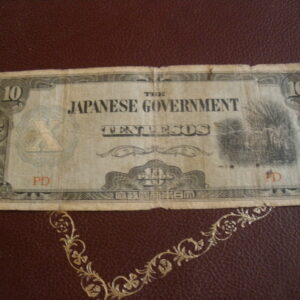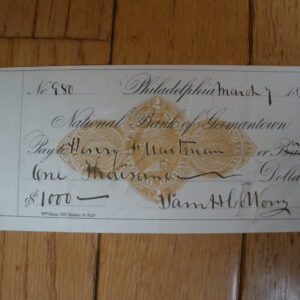For sale is a rare 1862 $10 VIRGINIA TREASURY NOTE from Richmond, Virginia. This obsolete currency note is in very fine condition. The note has a low serial number of 38. The 1862 currency note features a portrait of Governor John B. Floyd on the right side of the note; a graphic of a shield with Thor’s image; and a depiction of a seated Prosperity with a cornucopia. The note was issued on October 15, 1862. The note is hand signed. This civil war era currency note measures about 3 1/8 inches by 7 1/2 inches. A top notch historic collectible.
When the Civil War began the Confederate Government still accepted United States currency. To pay for the war, the Confederate government issued a vast array of paper currencies. Confederate States of America (CSA) promissory notes, also known as “graybacks,” were issued during the Civil War as a form of currency, promising payment after a Southern victory, but ultimately became worthless after the Confederacy’s defeat. The notes were nicknamed “graybacks” after the color of Confederate soldiers’ uniforms. In addition to the central government, individual states and even cities issued their own currency, further complicating the situation.
Making things even more confusing, state governments issued their own currencies — as did banks, insurance companies, and businesses. None of this paper money could be redeemed, or traded for, gold or silver — as was common in the early nineteenth century. The Confederate government had no gold or silver to make coins. Instead, Confederate paper money was like a loan — a promissory note or promise to pay at a later time. At the start of the war, when southerners expected to win the war, they were willing to trust that their paper dollars would continue to hold value. But as the South started to slide towards defeat, they lost faith in not only their chances of victory but their money as well.
The Confederate Government printed a million dollars’ worth of notes, which were treated more as bonds than bills since they were issued in such large denominations including $50, $100, and $500. Early in the civil war, much of the Confederate currency was produced in New York City. Eventually other printing firms such as the Southern Bank Note Company in New Orleans also made notes.
Between 1861 and 1865, the new government issued Confederate currency on eight separate occasions. Each issuance pumped millions of dollars into circulation. Counterfeiters added to the deluge with freshly made fakes. The result was a staggering amount of paper money and massive inflation. The CSA responded to the problem by recalling, cancelling, and burning old notes to remove them from circulation. The first official recall on February 17th, 1864, came after two years of less harsh—but unsuccessful—efforts to reduce the volume of currency in circulation. The Confederate Treasury Department enlisted the help of banks to cancel notes. Notes were cancelled by striking the note with machine-powered circular punches, cutting the note with scissors, or by striking the note with a bank hammers which left two x-shaped slices on the note. Cancelled notes were sent to the Confederate Treasury in Richmond, Virginia, to be burned. Some notes escaped destruction. At war’s end, the Union Army confiscated the notes along with Confederate government records to investigate a possible connection between the Confederacy and President Abraham Lincoln’s assassination.










